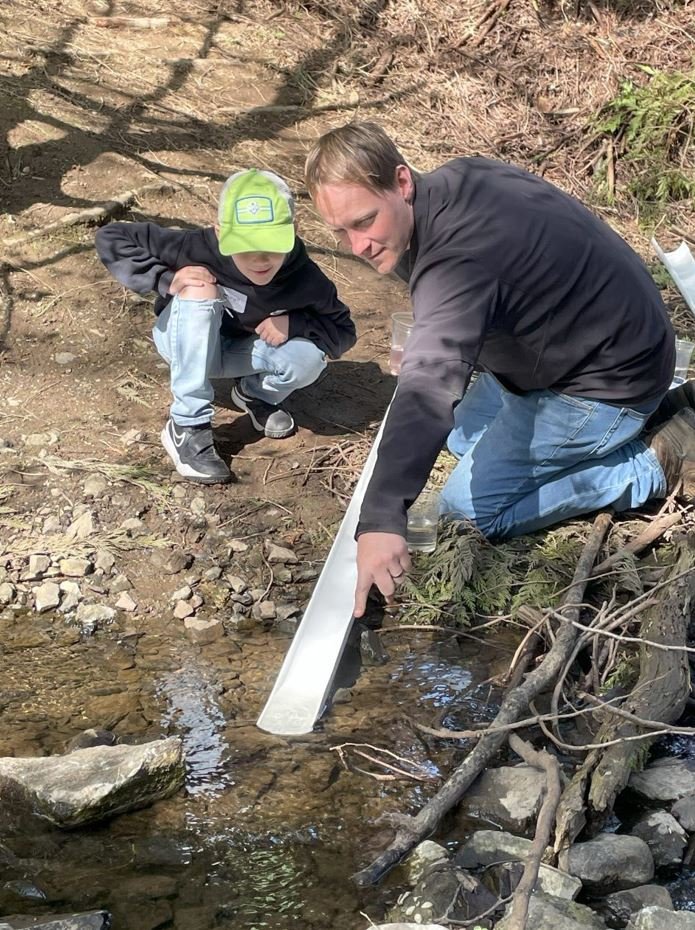By Harper Huntington, NSEA Education Coordinator
Preparing the eggs for the tank
The arrival of spring marks the beginning of NSEA’s salmon release season, a key part of our Students for Salmon program. Eighteen Whatcom County schools — along with the Bellingham Central Library — have been raising salmon in aquariums with support from NSEA and funding from the Office of Superintendent of Public Instruction (OSPI).
After observing the salmon grow from egg to alevin to fry, it was finally time to release them on their journey to the ocean. The journey began in January when NSEA delivered 200 Chum or Coho salmon eggs from the Kendall Creek and Skookum Creek hatcheries to each aquarium.
Salmon Release Skyline Elementary
Alongside classroom lessons about salmon and what they need to thrive, fourth graders tested their tank water regularly to ensure it stayed cold, clean, and clear. The Salmon in Schools experience gives students the chance to apply the concepts they’re learning in class to the real world — while forming a lasting personal connection to salmon.
The program culminated with a field trip, where students released their salmon fry into a local creek. Each student had a moment to connect with their fish — naming it, making a wish, or even sharing a poem before letting it go. One student wrote:
“Dear salmon, I wish you well,
On this challenge you will tell,
I hope you are one of two that will survive,
I wish you well, I hope you thrive.”
It was a bittersweet moment, but the students were buzzing with excitement as they watched their fry swim away — hopeful they might see them again someday.
Thanks to a partnership with the Bellingham Public Library, NSEA was able to bring this program to the broader community by setting up an aquarium in the Central Branch downtown. Additional activities included salmon-themed story times, crafts, and a livestream camera in the tank. The program culminated in a public salmon release ceremony, supported by library staff and presenters from White Swan Environmental, where more than 300 community members walked the path down to Whatcom Creek to release their own salmon fry.
Salmon Release Bellingham Library March 29th, 2025
These aquariums provide a powerful opportunity to educate and inspire — helping community members form a deep, personal connection to salmon and encouraging them to become better environmental stewards.
This spring, we released over 3,000 salmon fry across Whatcom County. And if you visit a local creek four to six years from now, you just might spot one of those same salmon returning home to spawn — continuing the cycle once again.







